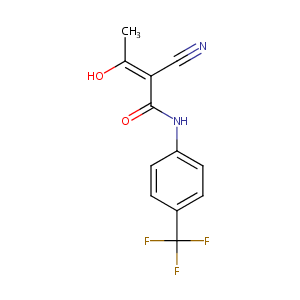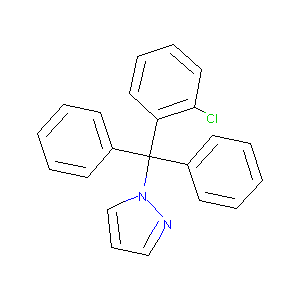| DOT Name |
DOT ID |
UniProt ID |
Mode of Action |
REF |
|
Phenylalanine--tRNA ligase, mitochondrial (FARS2)
|
OTXAK6F0
|
SYFM_HUMAN
|
Decreases Expression
|
[9] |
|
Ornithine aminotransferase, mitochondrial (OAT)
|
OTEKO8CT
|
OAT_HUMAN
|
Increases Expression
|
[9] |
|
Heat shock 70 kDa protein 1-like (HSPA1L)
|
OTC2V1K6
|
HS71L_HUMAN
|
Decreases Expression
|
[9] |
|
Bcl-2-like protein 1 (BCL2L1)
|
OTRC5K9O
|
B2CL1_HUMAN
|
Decreases Expression
|
[9] |
|
1,25-dihydroxyvitamin D(3) 24-hydroxylase, mitochondrial (CYP24A1)
|
OTG2T749
|
CP24A_HUMAN
|
Decreases Expression
|
[9] |
|
BCL2/adenovirus E1B 19 kDa protein-interacting protein 3 (BNIP3)
|
OT4SO7J4
|
BNIP3_HUMAN
|
Increases Expression
|
[9] |
|
Mitochondrial adenyl nucleotide antiporter SLC25A25 (SLC25A25)
|
OTMNPSNY
|
SCMC2_HUMAN
|
Increases Expression
|
[9] |
|
Mitochondrial fission regulator 2 (MTFR2)
|
OTLOR68D
|
MTFR2_HUMAN
|
Decreases Expression
|
[9] |
|
Choline dehydrogenase, mitochondrial (CHDH)
|
OTO2DPGL
|
CHDH_HUMAN
|
Decreases Expression
|
[9] |
|
Dimethyladenosine transferase 1, mitochondrial (TFB1M)
|
OTFCUSAZ
|
TFB1M_HUMAN
|
Decreases Expression
|
[9] |
|
Probable ATP-dependent RNA helicase DDX28 (DDX28)
|
OTIIHNYN
|
DDX28_HUMAN
|
Decreases Expression
|
[9] |
|
Glucocorticoid receptor (NR3C1)
|
OTCI2YDI
|
GCR_HUMAN
|
Increases Activity
|
[10] |
|
Cytochrome P450 3A4 (CYP3A4)
|
OTQGYY83
|
CP3A4_HUMAN
|
Increases Expression
|
[10] |
|
Cytochrome P450 2C9 (CYP2C9)
|
OTGLBN29
|
CP2C9_HUMAN
|
Increases Expression
|
[10] |
|
Cytochrome P450 2B6 (CYP2B6)
|
OTOYO4S7
|
CP2B6_HUMAN
|
Increases Expression
|
[10] |
|
Phosphoenolpyruvate carboxykinase, cytosolic (PCK1)
|
OTNWEJ5Y
|
PCKGC_HUMAN
|
Increases Expression
|
[10] |
|
Glucose-6-phosphatase catalytic subunit 1 (G6PC1)
|
OTJ6FM9F
|
G6PC1_HUMAN
|
Increases Expression
|
[10] |
|
Fatty acid synthase (FASN)
|
OTFII9KG
|
FAS_HUMAN
|
Decreases Expression
|
[10] |
|
Nuclear receptor subfamily 1 group I member 3 (NR1I3)
|
OTS3SGH7
|
NR1I3_HUMAN
|
Increases Expression
|
[10] |
|
Glycophorin-A (GYPA)
|
OTABU4YV
|
GLPA_HUMAN
|
Increases Expression
|
[11] |
|
Cellular tumor antigen p53 (TP53)
|
OTIE1VH3
|
P53_HUMAN
|
Increases Expression
|
[12] |
|
Retinoblastoma-associated protein (RB1)
|
OTQJUJMZ
|
RB_HUMAN
|
Decreases Expression
|
[13] |
|
Cyclin-A2 (CCNA2)
|
OTPHHYZJ
|
CCNA2_HUMAN
|
Increases Expression
|
[11] |
|
Ribosomal protein S6 kinase beta-1 (RPS6KB1)
|
OTAELNGX
|
KS6B1_HUMAN
|
Decreases Phosphorylation
|
[13] |
|
G1/S-specific cyclin-E1 (CCNE1)
|
OTLD7UID
|
CCNE1_HUMAN
|
Decreases Expression
|
[13] |
|
C-X-C chemokine receptor type 1 (CXCR1)
|
OT5512B2
|
CXCR1_HUMAN
|
Decreases Expression
|
[12] |
|
G1/S-specific cyclin-D2 (CCND2)
|
OTDULQF9
|
CCND2_HUMAN
|
Decreases Expression
|
[13] |
|
M-phase inducer phosphatase 1 (CDC25A)
|
OTSLKKCO
|
MPIP1_HUMAN
|
Decreases Expression
|
[13] |
|
RAC-alpha serine/threonine-protein kinase (AKT1)
|
OT8H2YY7
|
AKT1_HUMAN
|
Decreases Phosphorylation
|
[13] |
|
Cyclin-dependent kinase inhibitor 1 (CDKN1A)
|
OTQWHCZE
|
CDN1A_HUMAN
|
Increases Expression
|
[11] |
|
Heat shock factor protein 1 (HSF1)
|
OTYNJ4KP
|
HSF1_HUMAN
|
Increases Activity
|
[14] |
|
Eukaryotic translation initiation factor 4E-binding protein 1 (EIF4EBP1)
|
OTHBQVD5
|
4EBP1_HUMAN
|
Decreases Phosphorylation
|
[13] |
|
Interleukin-10 receptor subunit alpha (IL10RA)
|
OTOX3D1D
|
I10R1_HUMAN
|
Increases Expression
|
[12] |
| ------------------------------------------------------------------------------------ |
|
|
|
|


